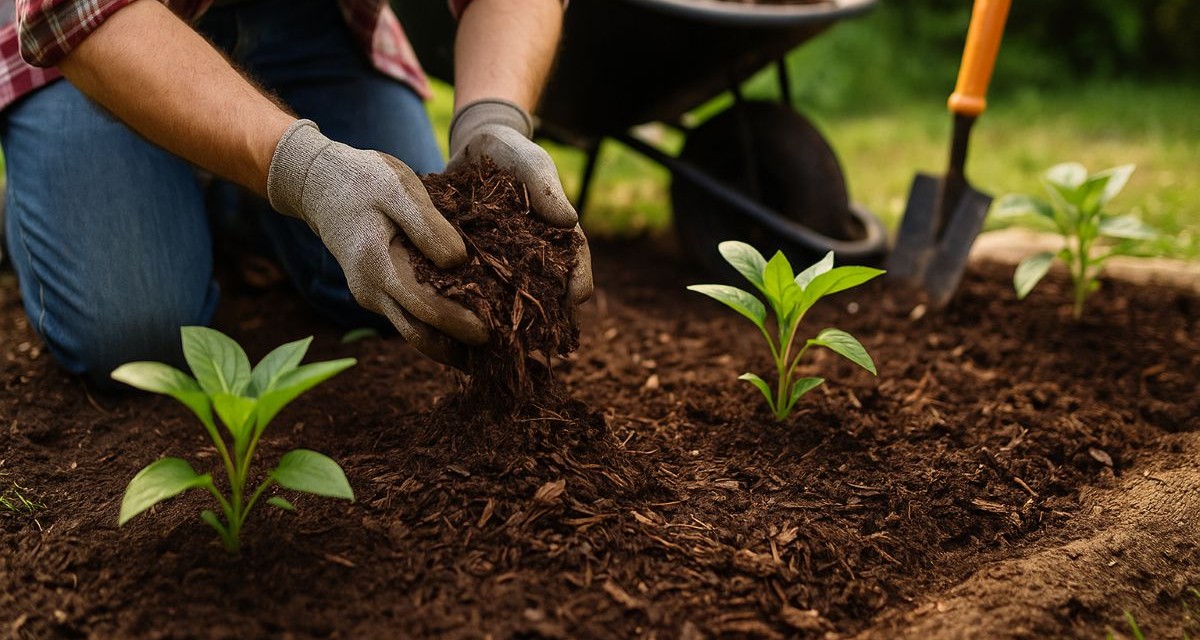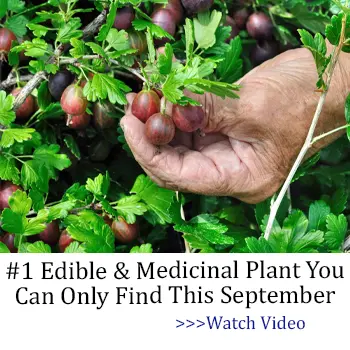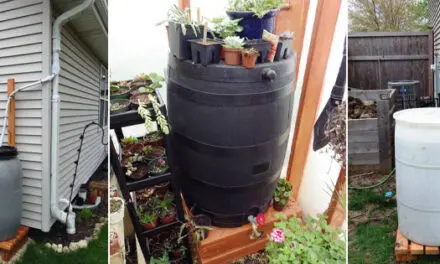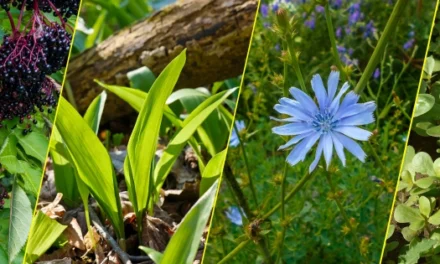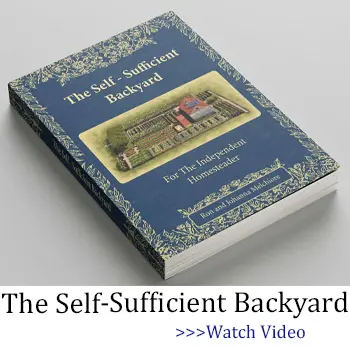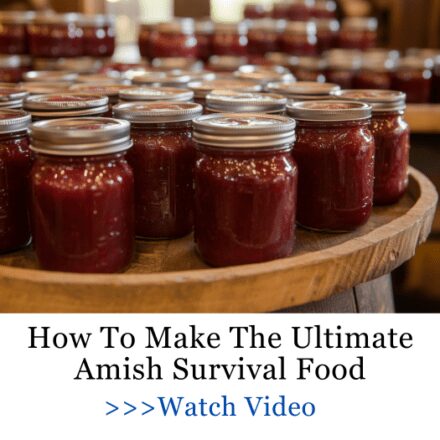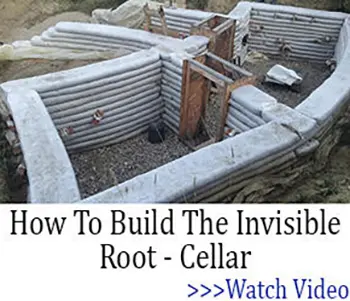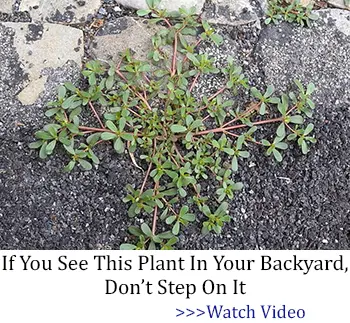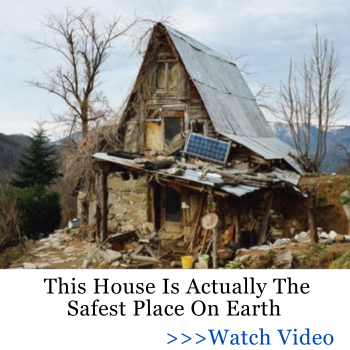Mulching is one of those old, quiet garden tricks that does far more than people realize. A good layer of mulch doesn’t just make a garden look neat—it protects the soil, feeds it, and helps your plants thrive through harsh seasons. But before you grab a shovel and start spreading, there’s one question every gardener needs to ask: how much mulch do I actually need?
What makes mulch truly valuable is its connection to the rhythm of the land. It mimics the forest floor—where fallen leaves, twigs, and decomposing matter protect and nourish the roots below. When you add mulch, you’re not just covering soil; you’re recreating a natural cycle that’s been keeping ecosystems healthy for millennia. The right amount ensures that balance continues, rather than tipping it toward suffocation or depletion.
Why Mulch Matters
Mulch acts as a living blanket for your soil. It keeps the ground moist by reducing evaporation, prevents weeds from taking over, and regulates temperature so your plants don’t bake in the summer or freeze in the winter. Organic mulches—like bark, straw, leaves, or compost—also break down slowly, enriching the soil with nutrients as they decompose.
Related: Vermicomposting: A Simple Way to Turn Scraps Into Black Gold
Beyond protection, mulch plays a subtle but powerful role in soil health. It nurtures the invisible world beneath your feet—the fungi, bacteria, and earthworms that make soil fertile. These organisms feed on the organic matter in mulch and, in turn, release vital nutrients for your plants. This quiet exchange is the foundation of any self-sustaining garden. Skipping mulch doesn’t just leave the surface bare—it interrupts this ancient conversation between plant and soil.
The Rule of Thumb
For most gardens, a 2–4 inch layer of mulch is ideal. Less than that won’t hold moisture effectively, and more than that can suffocate roots or create a soggy layer where fungi thrive.
To calculate how much mulch you need:
- Measure your area – Multiply the length by the width of your garden bed to get the square footage.
- Decide your depth – Choose between 2 and 4 inches depending on your climate and purpose.
- Light coverage (2 inches): for already healthy soil or decorative beds.
- Heavy coverage (3–4 inches): for weed control, water retention, or poor soil.
- Use this simple formula:
- Cubic feet of mulch = (Square feet × Desired depth in inches) ÷ 12
If your mulch is sold by the cubic yard (most bulk suppliers do), divide that number by 27 since one cubic yard equals 27 cubic feet.
Example:
A 100-square-foot garden bed with 3 inches of mulch:
(100 × 3) ÷ 12 = 25 cubic feet
25 ÷ 27 = 0.93 cubic yards
So, you’ll need about 1 cubic yard of mulch.
When in doubt, round up slightly. It’s better to have a little extra than to stretch it too thin. Keep in mind that mulch settles over time—especially organic types that decompose through the season. A top-up every year or two will maintain coverage and continue feeding the soil naturally, keeping your garden resilient without relying on synthetic fertilizers.
Choosing the Right Mulch
Each mulch material has its strengths—and drawbacks.
| Type | Best For | Notes |
| Wood chips or bark | Flower beds, trees | Long-lasting, but can tie up nitrogen at first. |
| Straw or hay | Vegetable gardens | Great insulator, but avoid seed-filled bales. |
| Compost or leaf mold | Enriching soil | Adds nutrients quickly, breaks down fast. |
| Grass clippings | Quick fixes | Keep layers thin to prevent rot or odor. |
| Gravel or stones | Dry gardens, paths | Permanent, but doesn’t feed the soil. |
When selecting mulch, consider not just appearance, but how it interacts with your land. Natural mulches are living materials—they shift, breathe, and integrate with your soil life. Synthetic options may last longer, but they can’t contribute to the natural cycle of decay and renewal. Whenever possible, source mulch locally. Fallen leaves, wood chips from a nearby tree service, or straw from a neighbor’s farm often carry the same ecological imprint as your soil, helping the ecosystem maintain its balance.
Common Mistakes to Avoid
- Piling mulch against tree trunks – This causes rot and invites pests. Always leave a few inches of breathing room.
- Using plastic beneath mulch – It prevents water and oxygen from reaching roots.
- Over-mulching – More isn’t better. Thick layers suffocate beneficial organisms and attract mold.
Many gardeners make these mistakes out of good intentions—they want to protect their plants—but nature thrives on moderation. Too much of a good thing can disrupt soil aeration and lead to hidden issues like root rot or fungal outbreaks. Remember, mulch should complement your soil, not smother it. A simple rake-through once or twice a season helps refresh airflow and ensures your mulch continues to do what it’s meant to: support life from the ground up.
A Natural Balance
Mulching is both an art and a science. Too much, and you stifle growth. Too little, and you lose the protection nature intended. Aim for balance—just enough to nurture, but not enough to smother.
Over time, you’ll start to see mulch not as a gardening chore but as part of a conversation with your land. You’ll notice how certain plants respond, how moisture lingers longer after rain, and how soil grows richer under that quiet cover. This is how self-sufficiency begins—not with big machines or chemicals, but with learning the rhythm of the earth beneath your feet.
Build a Self-Sustaining Garden That Feeds Itself
If the idea of creating a thriving, low-maintenance garden appeals to you, take a look at My Survival Farm. This system is built on permaculture principles—the same natural cycles that make mulch so powerful. It shows you how to grow a self-sustaining food system that needs minimal watering, no chemicals, and keeps producing year after year.
With step-by-step guidance, you can turn any small patch of soil into a productive, regenerative garden that supports you in times of plenty and crisis alike.
👉 Discover My Survival Farm and learn how to grow abundance the natural way.
This Is Why You Should Grow Living Mulch In Your Garden
The Natural Painkiller that Grows in Your Backyard (Video)
Vertical Gardening for Self-Sufficient Living
Bucket Gardening: How to Grow Your Own Food Anywhere
This Is How Your Compost Could Kill You

